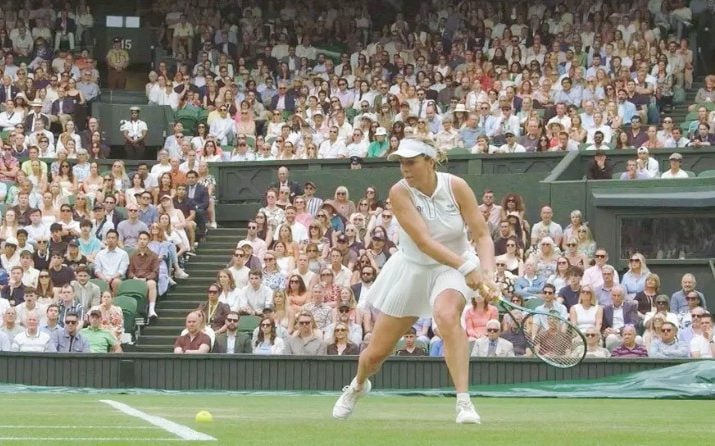The Wimbledon Hawk-Eye Incident and the System Overhaul
The recent incident involving the Wimbledon Hawk-Eye software has sparked significant discussion, particularly after an operator accidentally turned off the system without noticing. This error occurred during a critical moment in the fourth-round match between Sonay Kartal and Anastasia Pavlyuchenkova, where the cameras monitoring the ball on one side of the court were switched off with a single click.
Support kami, ada hadiah spesial untuk anda.
Klik di sini: https://indonesiacrowd.com/support-bonus/
This mistake has led to officials expressing deep disappointment, but investigations have confirmed that the technology itself has been operating flawlessly when active. An All England Club spokesperson stated that they conducted a thorough review of their systems and processes, emphasizing that the ball-tracking technology was working optimally during the Championships.
Following the incident, the club made necessary changes to prevent such errors from happening again. They have removed the ability for Hawk-Eye operators to manually deactivate the ball tracking, ensuring that human error cannot repeat the issue. The spokesperson added that while the source of the problem was human error, the system changes now make it impossible for such a mistake to occur again.
Pavlyuchenkova, who could have moved ahead in the match had the call been made, expressed frustration with umpire Nico Helwerth for ordering the point to be replayed. She accused him of bias and stealing the game. Organisers apologised to both players, with Wimbledon chief executive Sally Bolton stating that it was important to explain what had happened and to apologise for the error.
Support us — there's a special gift for you.
Click here: https://indonesiacrowd.com/support-bonus/
The new line-judge technology, which replaced human line judges this year, has faced criticism from players like Emma Raducanu and Jack Draper. However, following an audit, Wimbledon remains confident that the technology has not made any mistakes beyond Sunday’s error.
After no intervention from the automated line-calling technology, the point continued before Helwerth ordered the players to halt play, calling “stop, stop” mid-rally. The match was paused for about four minutes as the umpire checked whether the new system was functioning properly. There was also no replay shown on the screen by Hawk-Eye, which is unusual for points deemed close calls.
Helwerth was not assigned any matches at Wimbledon on Monday, despite being on the roster of match officials every other day. The All England Club stated he was on a pre-arranged day off. During a press briefing, Bolton was repeatedly asked how the system could have unintentionally been switched off. She hinted that there had been an error by one individual in switching off the cameras, but also by another official in alerting the umpire.
Bolton explained that there is a process in place for activating and deactivating the system, which requires a human element. The job of the Hawk-Eye official and the review official is to ensure that the system is activated at the beginning of a match and is set up properly, and then to support the chair umpire. In this case, the chair umpire was not being informed that the system had been partially deactivated.
On BBC’s coverage, former Wimbledon champion Pat Cash was critical of Helwerth before Wimbledon clarified that the issue had been a mistake in the use of the technology. Kartal, who insisted she did not know if the ball was in or out, defended Helwerth’s handling of the situation.
The ELC system has 50 operators, uses 12 cameras per court, and has one operator working across two courts with each court having a review official who is in communication with the umpire, in this case Helwerth. But at the crucial moment, the technology was not activated.
Unlike the Australian Open, the US Open and Masters tour events, Wimbledon does not have a video-review system, raising questions about why that is the case. Wimbledon added that they continue to have full confidence in the accuracy of the ball-tracking technology. The live ELC system relies on the Hawk-Eye operators, the review official and the technology to work in harmony. This did not happen. In this instance, there was a human error and as a consequence, they have fully reviewed their processes and made the appropriate changes.
Wimbledon broke from its 147-year tradition this year, replacing its impeccably-dressed line judges with the technology that has become commonplace on the tour. The error that led to the technology being “unticked” has never happened before.
Tim Henman’s Response to Criticism
However, Tim Henman says complaints from Raducanu, Draper and others about Wimbledon’s electronic line-calling technology are “complete garbage.” He noted that during commentating on some matches, he saw moments where the ball appeared to be on the edge of the line. When reviewing them in slow motion, he found that they were indeed on the line. Henman argued that the narrative suggesting the technology is inaccurate is unfounded.
Henman, a BBC pundit and senior figure at the All England Club, drew a distinction between the criticism and the “human error” line-calling incident involving Pavlyuchenkova. He emphasized that the Kartal incident involved someone un-clicking a box, which deactivated the system. This, he said, was a separate issue from the technology itself.
“This is technology that’s been around for a long, long time. Is it accurate? Absolutely, 100 per cent. When you move to the Kartal element, that’s human error, that is someone that has un-clicked a box, and so the system is deactivated. So if it’s not activated, it’s not going to work. So they’re two totally separate situations.”







